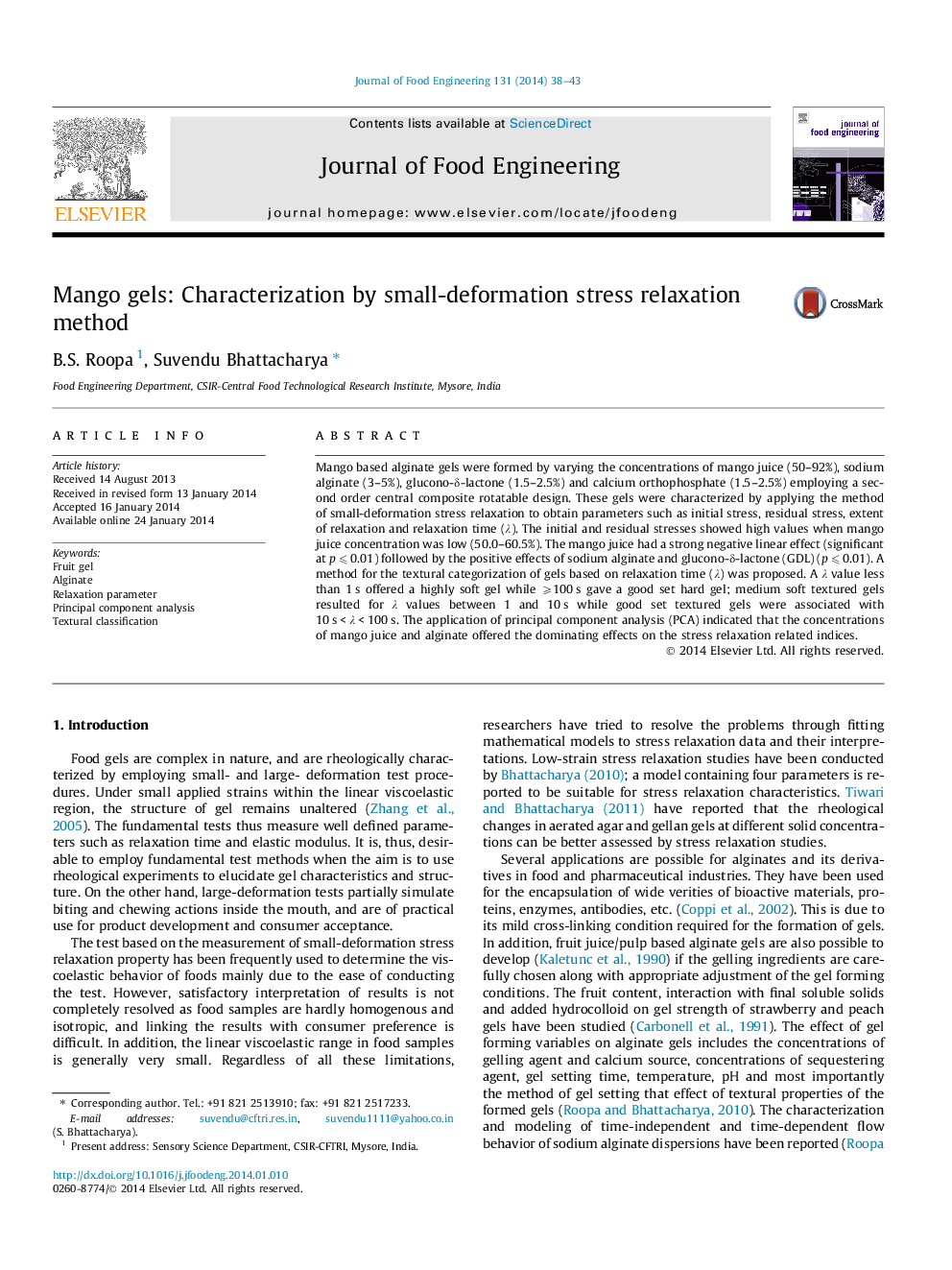| Article ID | Journal | Published Year | Pages | File Type |
|---|---|---|---|---|
| 6665847 | Journal of Food Engineering | 2014 | 6 Pages |
Abstract
Mango based alginate gels were formed by varying the concentrations of mango juice (50-92%), sodium alginate (3-5%), glucono-δ-lactone (1.5-2.5%) and calcium orthophosphate (1.5-2.5%) employing a second order central composite rotatable design. These gels were characterized by applying the method of small-deformation stress relaxation to obtain parameters such as initial stress, residual stress, extent of relaxation and relaxation time (λ). The initial and residual stresses showed high values when mango juice concentration was low (50.0-60.5%). The mango juice had a strong negative linear effect (significant at p ⩽ 0.01) followed by the positive effects of sodium alginate and glucono-δ-lactone (GDL) (p ⩽ 0.01). A method for the textural categorization of gels based on relaxation time (λ) was proposed. A λ value less than 1 s offered a highly soft gel while ⩾100 s gave a good set hard gel; medium soft textured gels resulted for λ values between 1 and 10 s while good set textured gels were associated with 10 s < λ < 100 s. The application of principal component analysis (PCA) indicated that the concentrations of mango juice and alginate offered the dominating effects on the stress relaxation related indices.
Related Topics
Physical Sciences and Engineering
Chemical Engineering
Chemical Engineering (General)
Authors
B.S. Roopa, Suvendu Bhattacharya,
